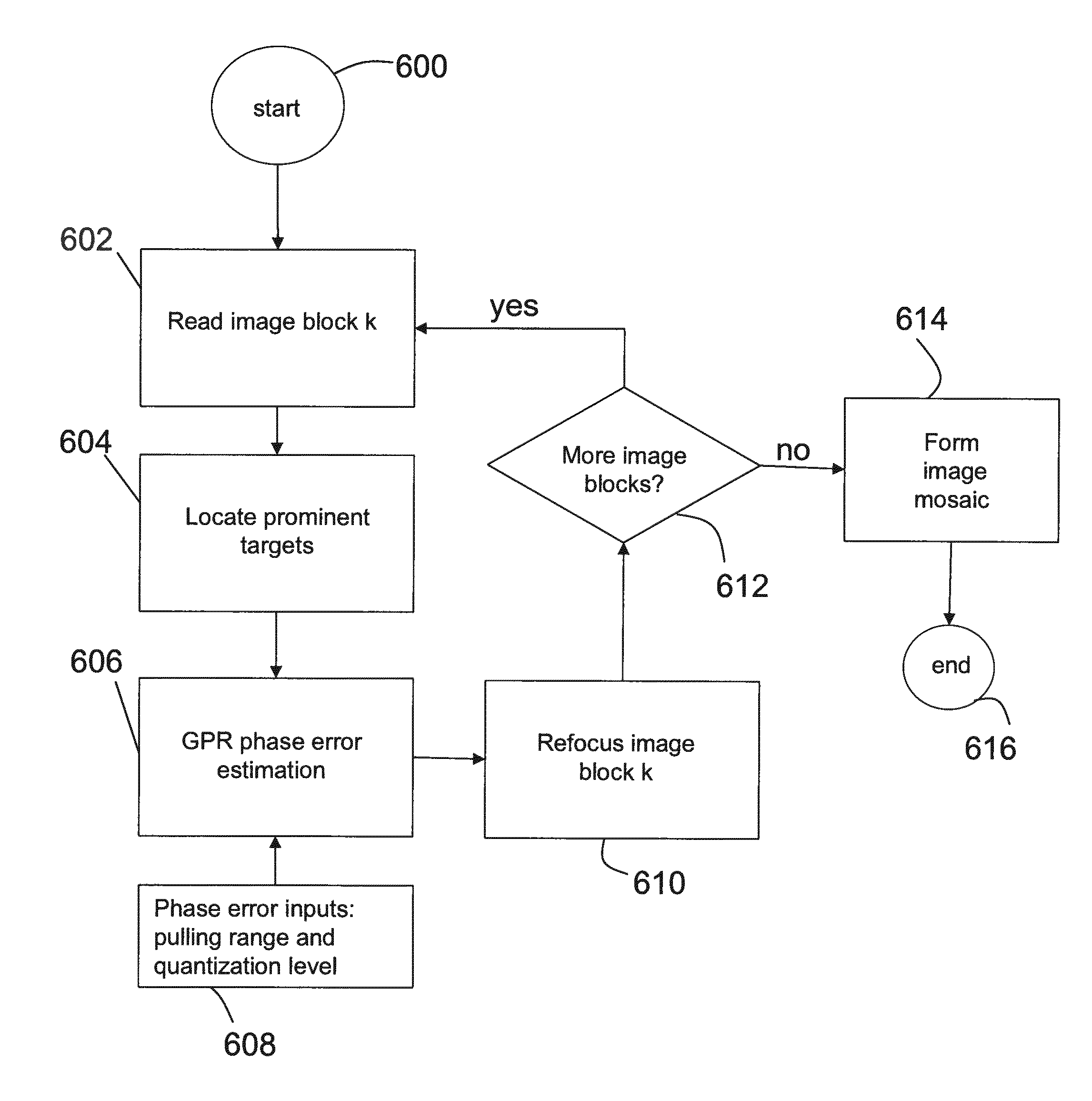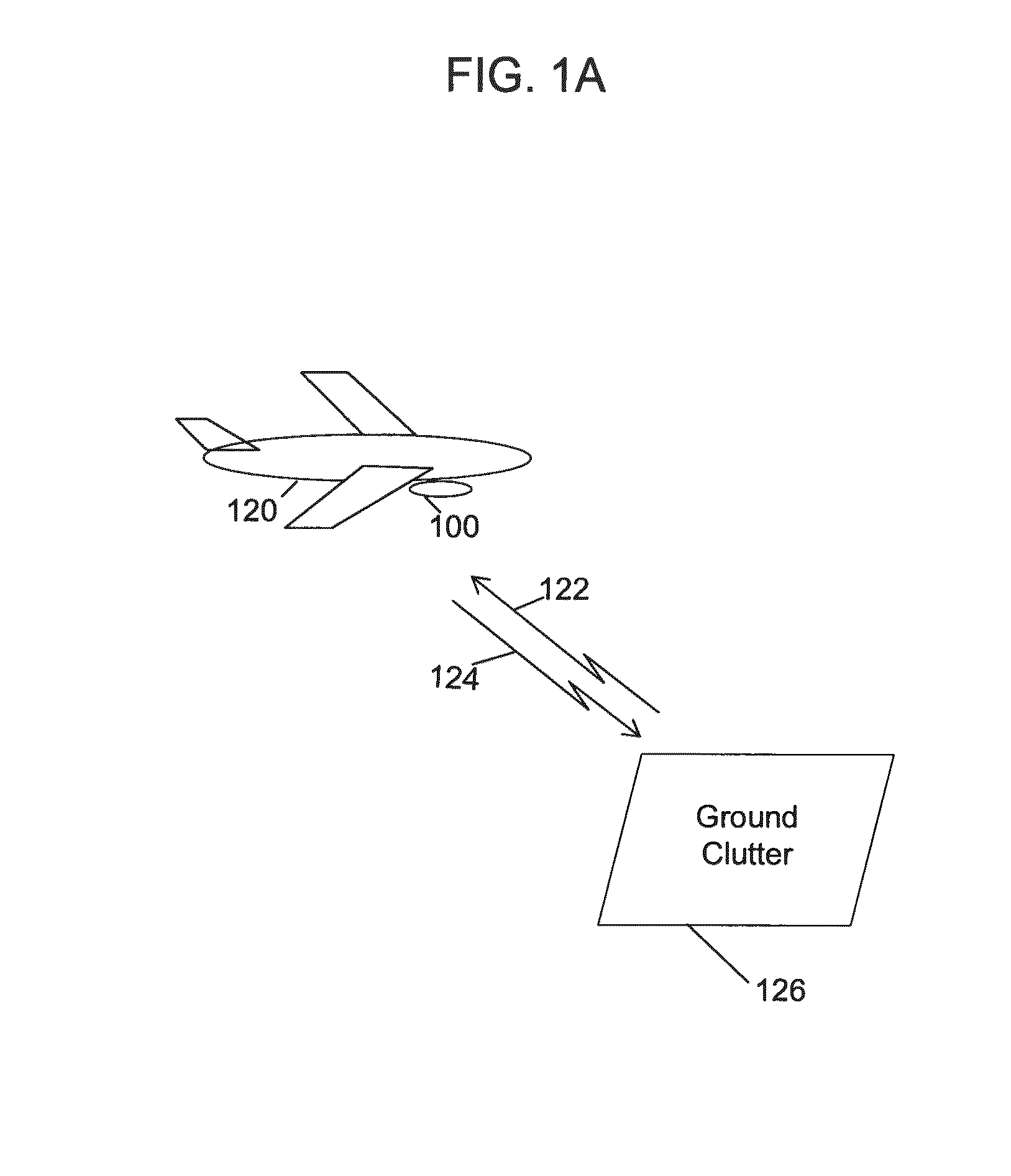SAR autofocus for ground penetration radar
a technology of ground penetration radar and autofocus, which is applied in the direction of reradiation, measurement devices, instruments, etc., can solve the problems of difficult gpr autofocus solution, high azimuth resolution not achieved for most sar systems, and one autofocus solution may only be applicable to a small image block
- Summary
- Abstract
- Description
- Claims
- Application Information
AI Technical Summary
Benefits of technology
Problems solved by technology
Method used
Image
Examples
Embodiment Construction
[0046]An embodiment of the present invention provides a method for autofocus for wide-beam / wide-band ground penetration radar (GPR), where the wide beam angle makes the phase error highly spatially varying. This method estimates target phase error directly from the complex ground image of high contrast targets. A focused image is then obtained by removing the estimated phase error from the spatial frequency spectra of the complex image. The phase error of the imaged targets is modeled by the superposition of a one-dimensional Fourier series of limited order. Each component of the phase error is estimated from the two-dimensional spatial (ground) frequency spectra through 2D to 1D mapping. Optimal phase error is obtained by means of a contrast optimization method.
[0047]Embodiments of this method overcome some of the challenges of GPR autofocus. First, to overcome spatially varying phase error, the GPR image is divided into multiple image blocks in order for each image block to be ref...
PUM
 Login to View More
Login to View More Abstract
Description
Claims
Application Information
 Login to View More
Login to View More - R&D
- Intellectual Property
- Life Sciences
- Materials
- Tech Scout
- Unparalleled Data Quality
- Higher Quality Content
- 60% Fewer Hallucinations
Browse by: Latest US Patents, China's latest patents, Technical Efficacy Thesaurus, Application Domain, Technology Topic, Popular Technical Reports.
© 2025 PatSnap. All rights reserved.Legal|Privacy policy|Modern Slavery Act Transparency Statement|Sitemap|About US| Contact US: help@patsnap.com



